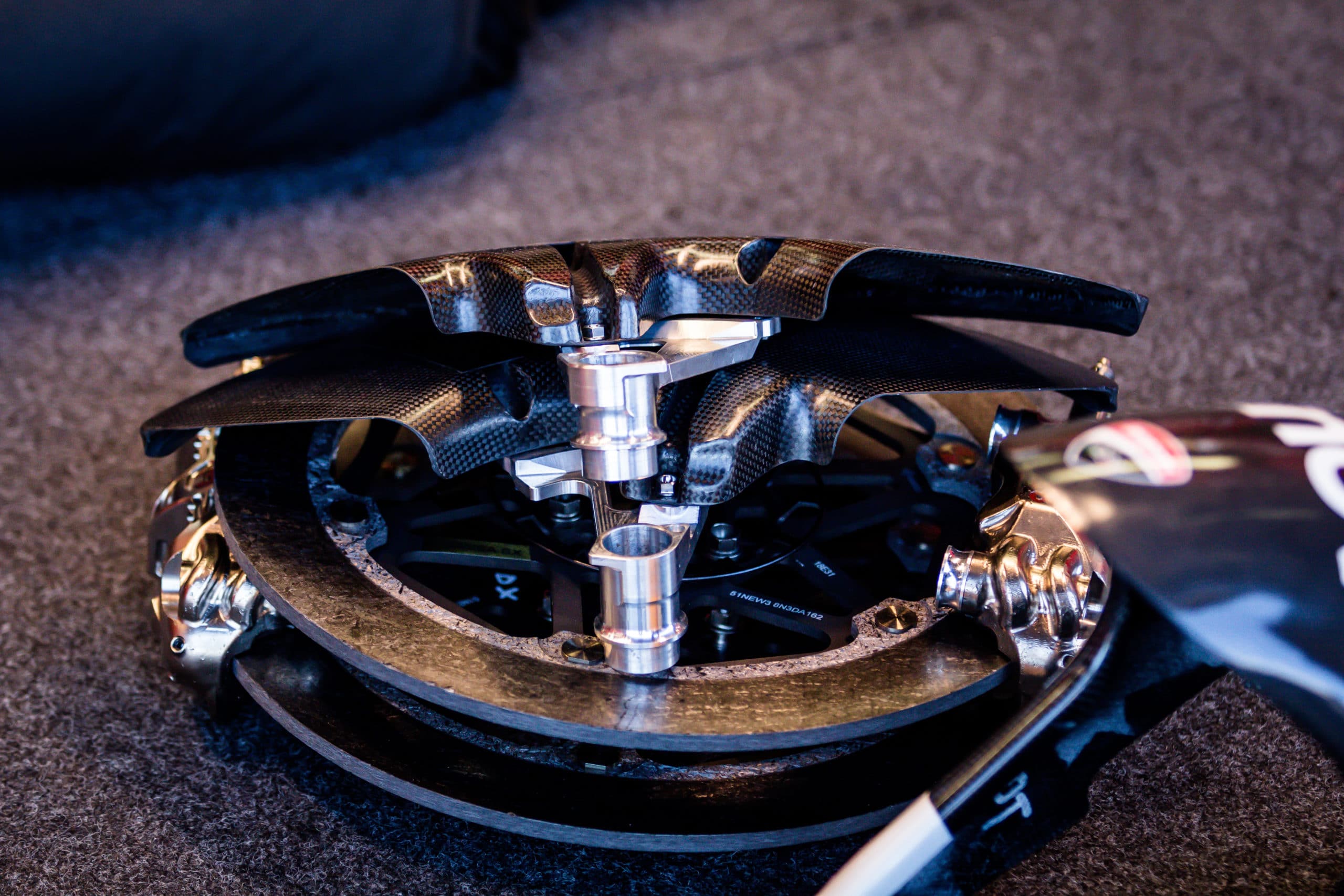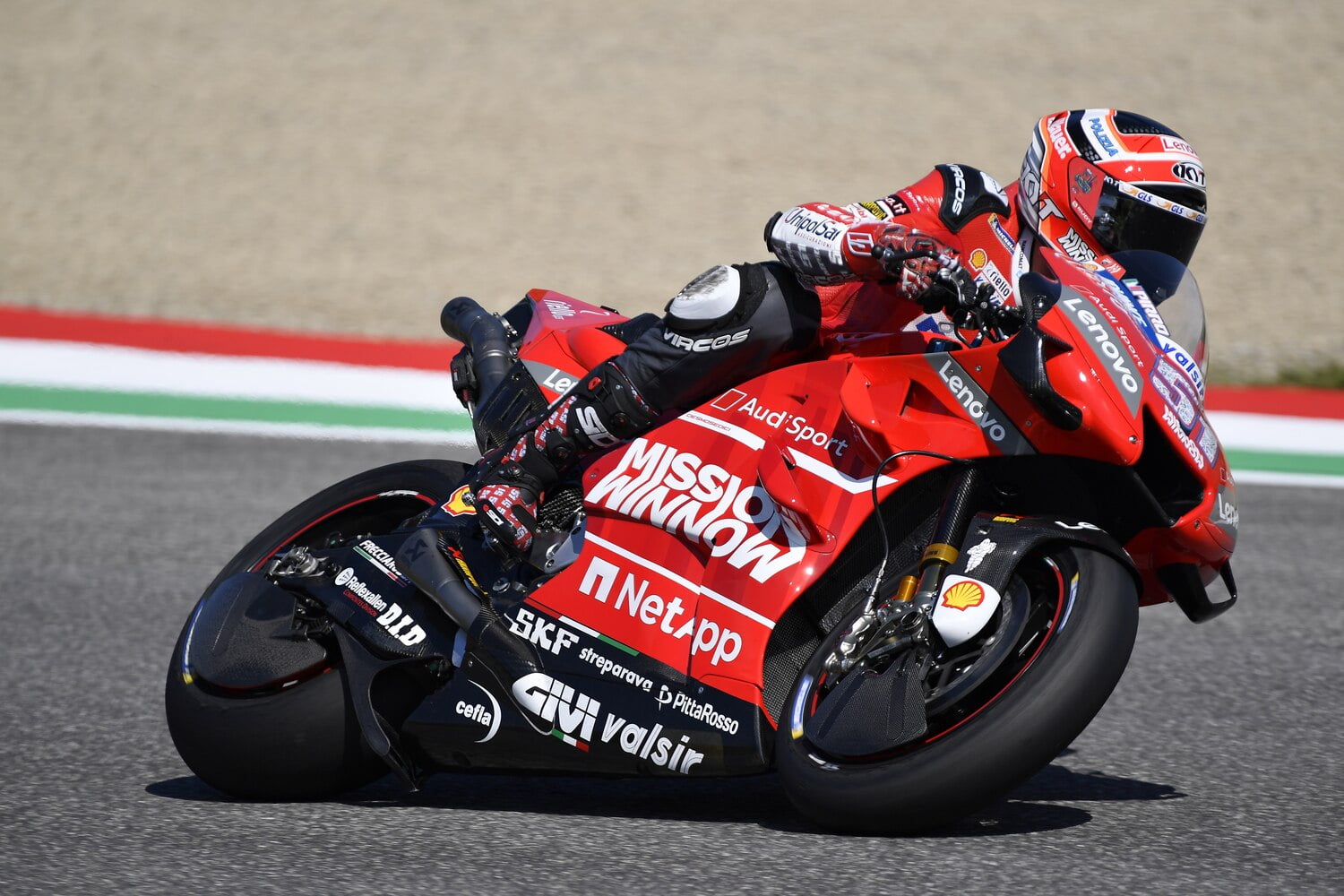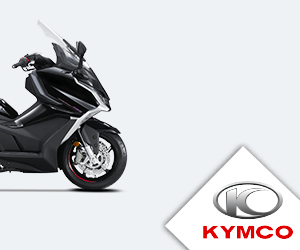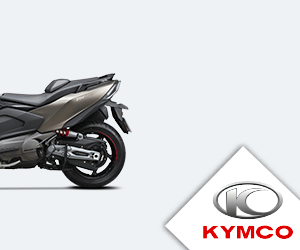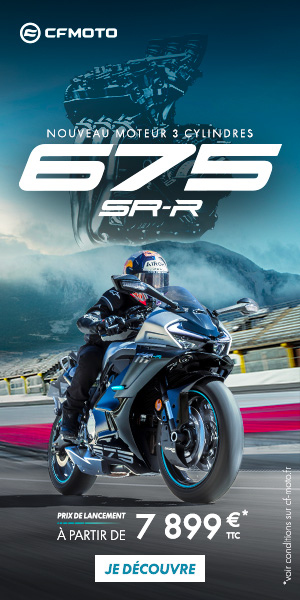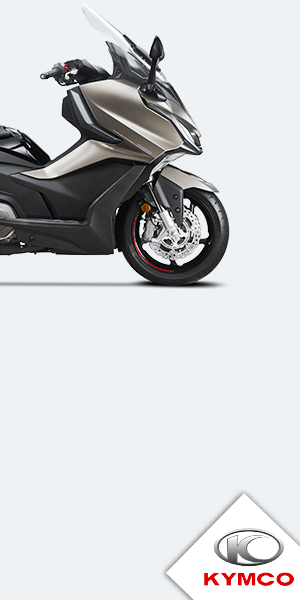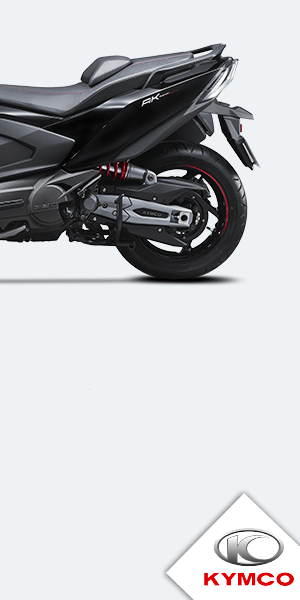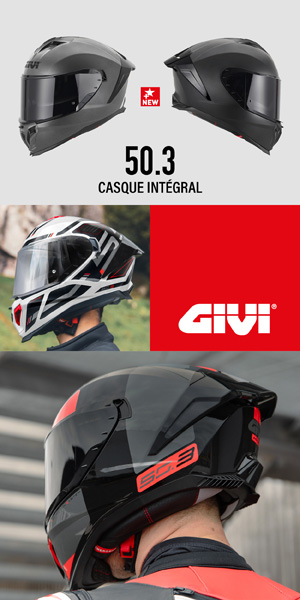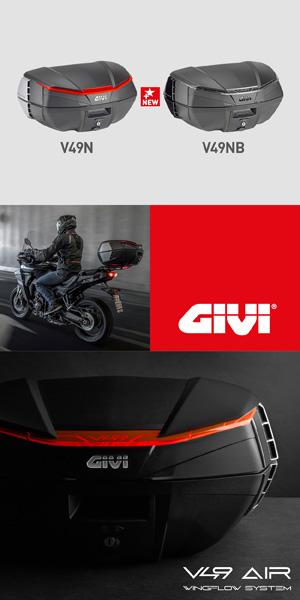In 2019, aerodynamics took a quantum leap in complexity. Wheel covers first appeared with the main purpose, in theory, of increasing top speed.
This is achieved by smoothing the airflow around the front wheel, concentrating the air and reducing the turbulence created by it. All of this creates a more aerodynamically efficient motorcycle, allowing it to reach higher top speeds.
Ducati was the first factory to develop this concept, with front and rear wheel covers, but the 2020 Aprilia RS-GP is also equipped with them. They cleverly use the hubcap as an air conduit to cool the brake caliper, maintaining the correct temperatures and thus ensuring optimal performance!
First, Ducati used much wider (and much stiffer – they no longer rub against the tire wall, erasing the Michelin logo as they go) hubcaps on the front wheel. Instead of covering less than a quarter of the bottom of the front wheel, they now extend much further forward to the brake caliper. So, from an arc of about 80°, they went to something closer to approximately 130°.
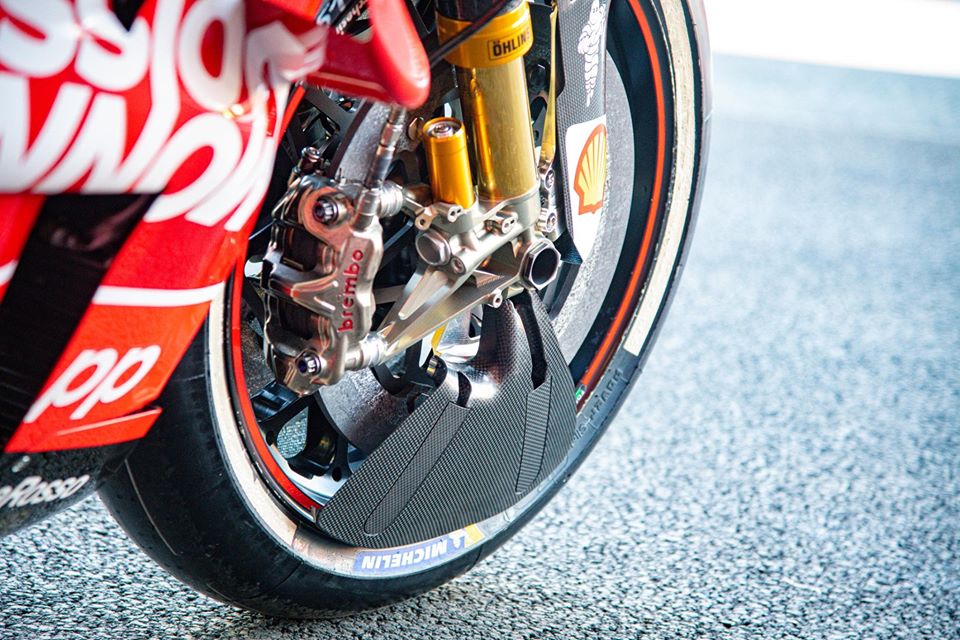
One of the first versions of the hubcaps, more discreet than those currently seen
The aerodynamic part shown above therefore helps smooth the airflow around the front wheel, which tends to cause turbulent airflow due to its rotation. Smoothing the airflow helps the GP19 achieve a higher top speed.
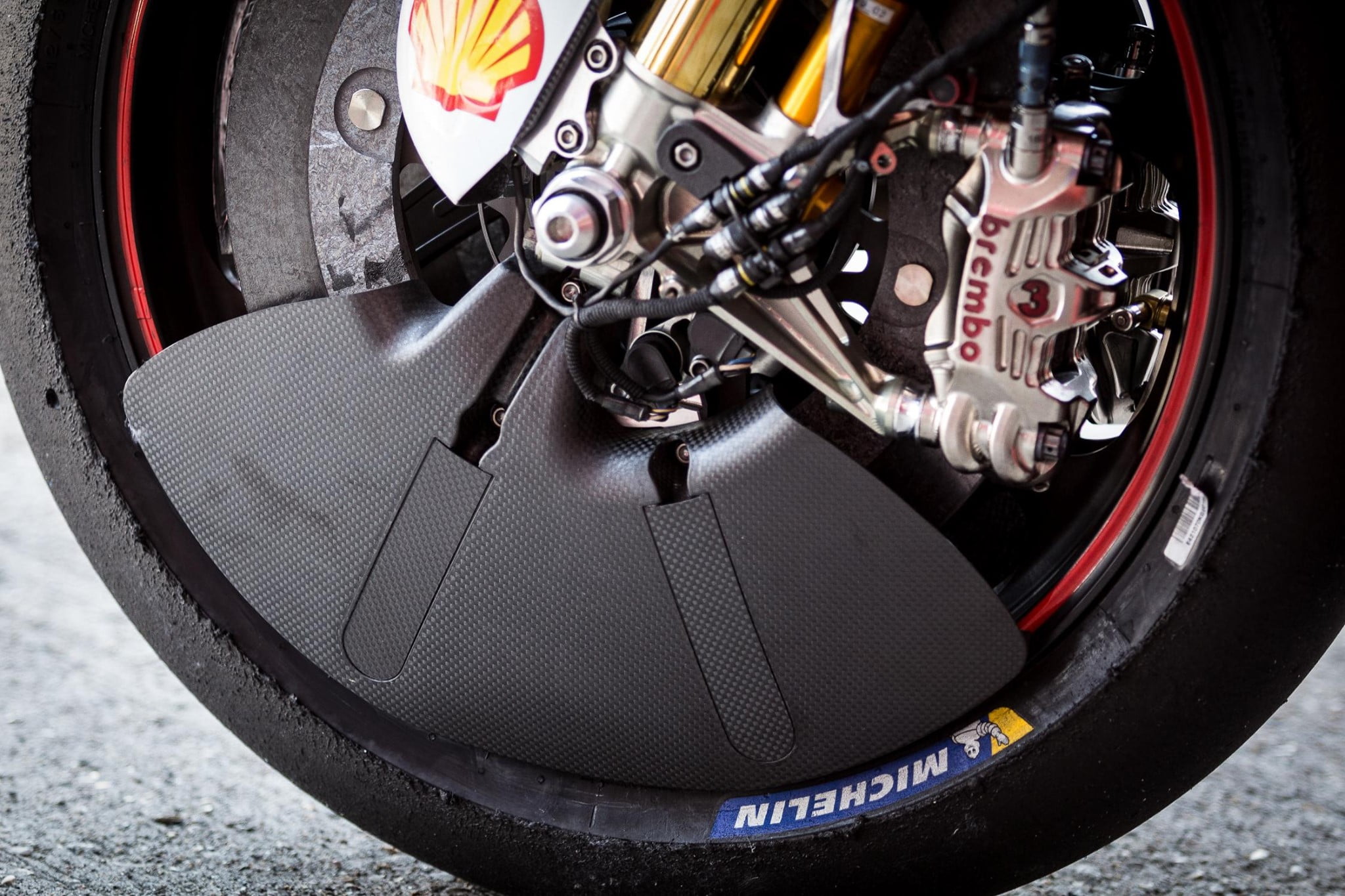
A much more enveloping evolution of the hubcaps used by Ducati
This photo shows how Ducati updated it to make it much larger. This hubcap extends to the brake caliper but also higher up at the front.
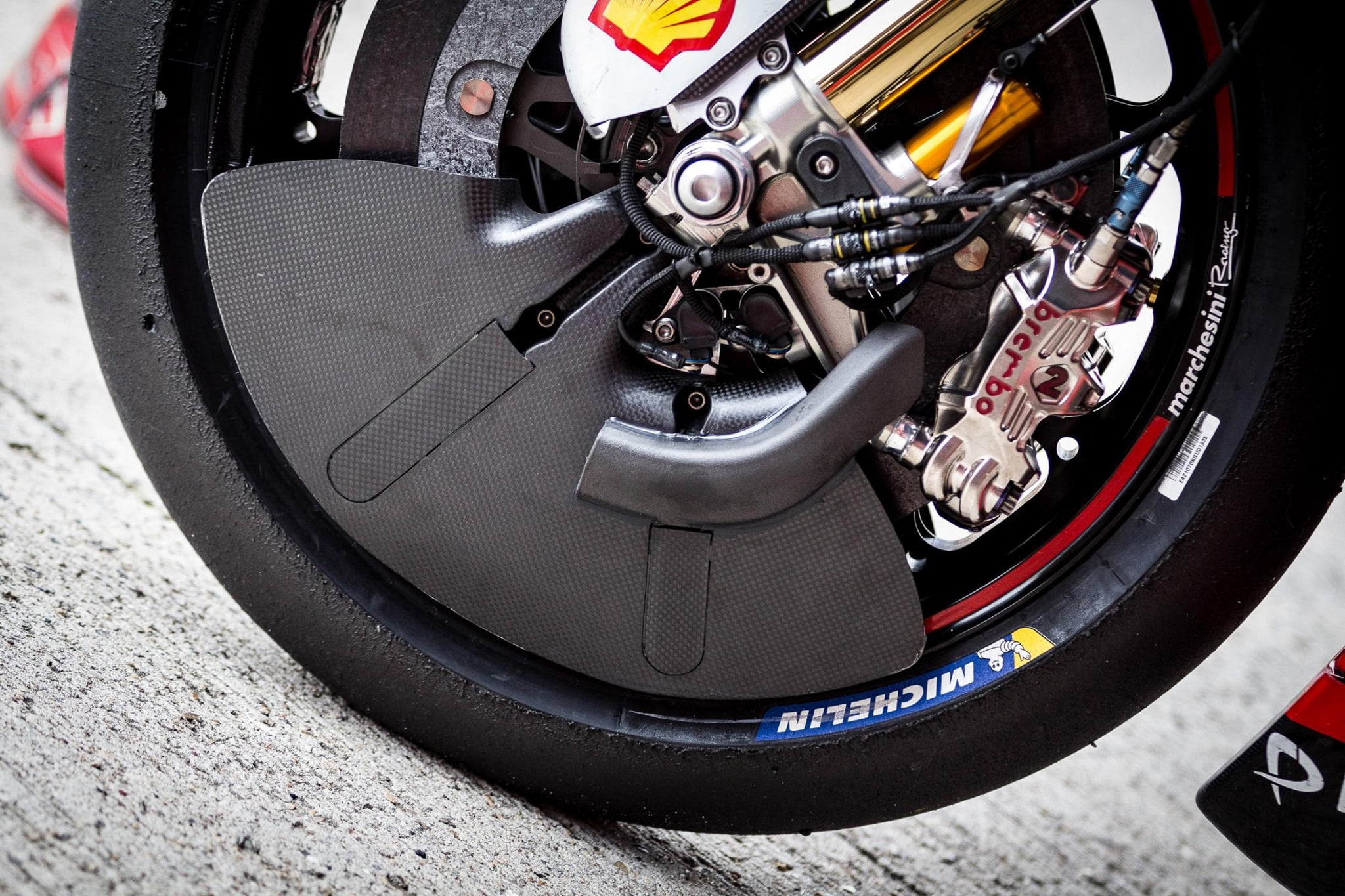
A similar version, incorporating a brake caliper cooling system
Here we note the addition of an air duct to cool the caliper. Ducati uses it on tracks with several restrictive braking zones like in Spielberg, Austria.
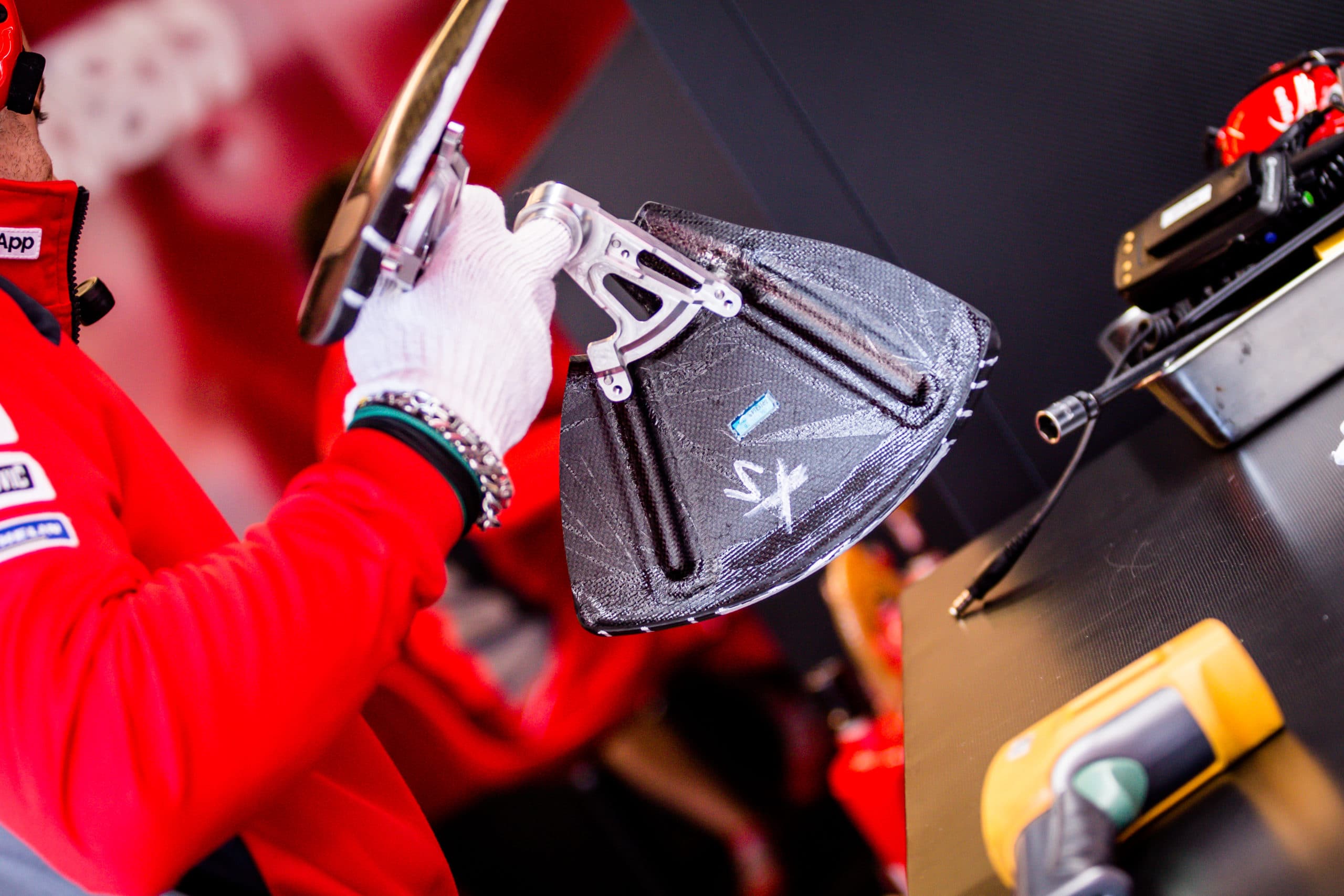
A front wheel cover being prepared by a Ducati technician
It seems that the spoon fitted to the Ducati is only really effective if the air from the front wheel is guided along the fairing to the rear wheel. Because these systems are attached to the front wheel axle, they are unsprung masses. The fact that the mechanic is holding them both with one hand shows that Ducati has done everything possible to minimize their weight.
These front wheel covers always go hand in hand with those installed on the rear wheel. In the photo below you can see that they moved the second wheel speed sensor. Previously, Ducati placed the two sensors on the top of the swingarm, next to each other. The vertical spatula-shaped section of the hubcap is the reinforced attachment section, at the rear of the chain tensioner. You can see that the hubcap is not firmly attached, because it is rilsans that act as fasteners. Seeing this, we understand better that one of Pirro's wheel covers came off at Mugello.
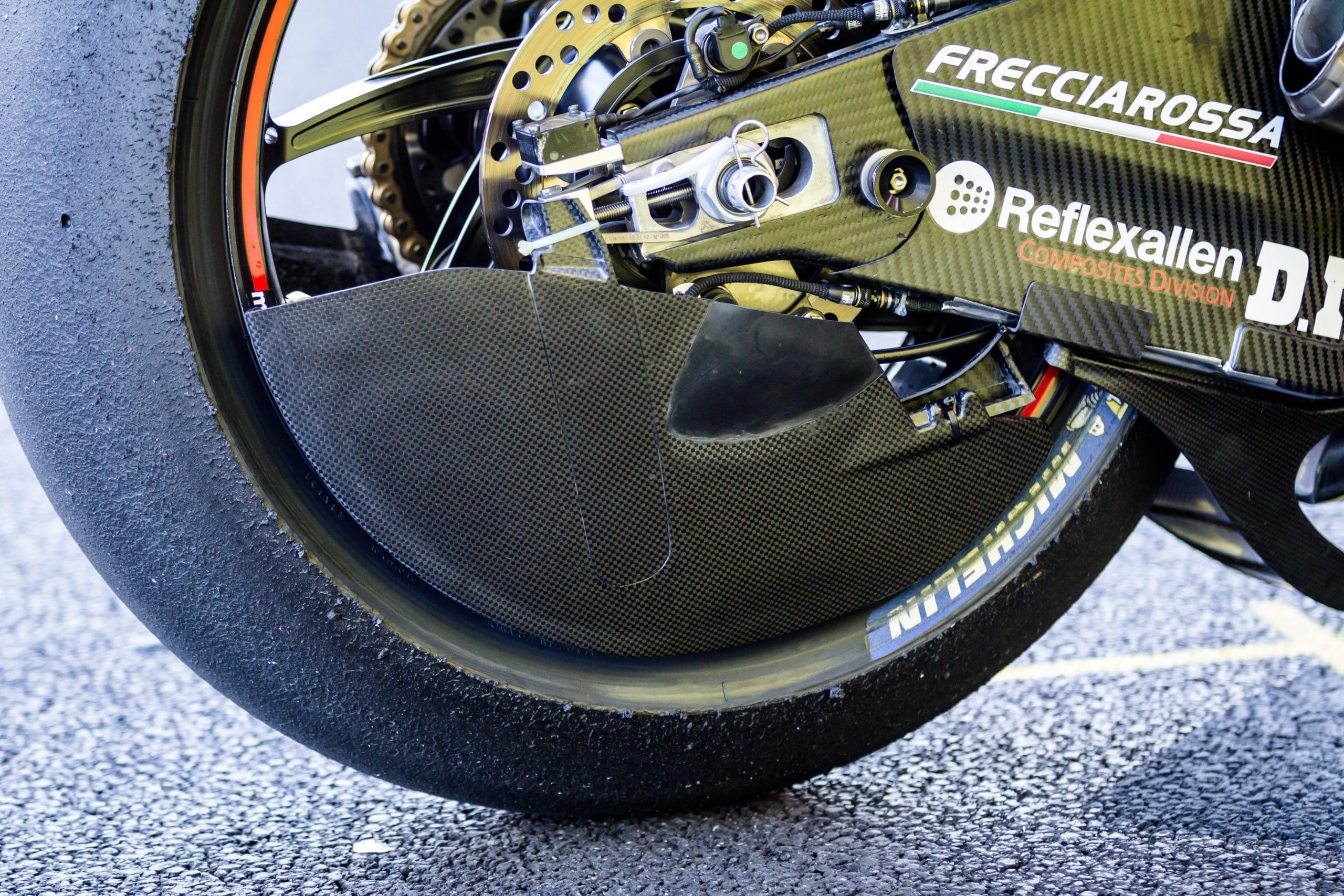
Rear wheel cover on the right side of the Ducati GP19
Because the hubcap must be able to move with the wheel (to adjust the chain or when different sized sprockets are used), Ducati has manufactured a special chain tensioner. We also note the presence of a carbon support fixed to the bottom of the swinging arm, which allows the position of the hubcap to be adjusted when the wheel is in place.
Also note the accelerometer at the end of the swingarm, precisely measuring the movement of the swingarm.
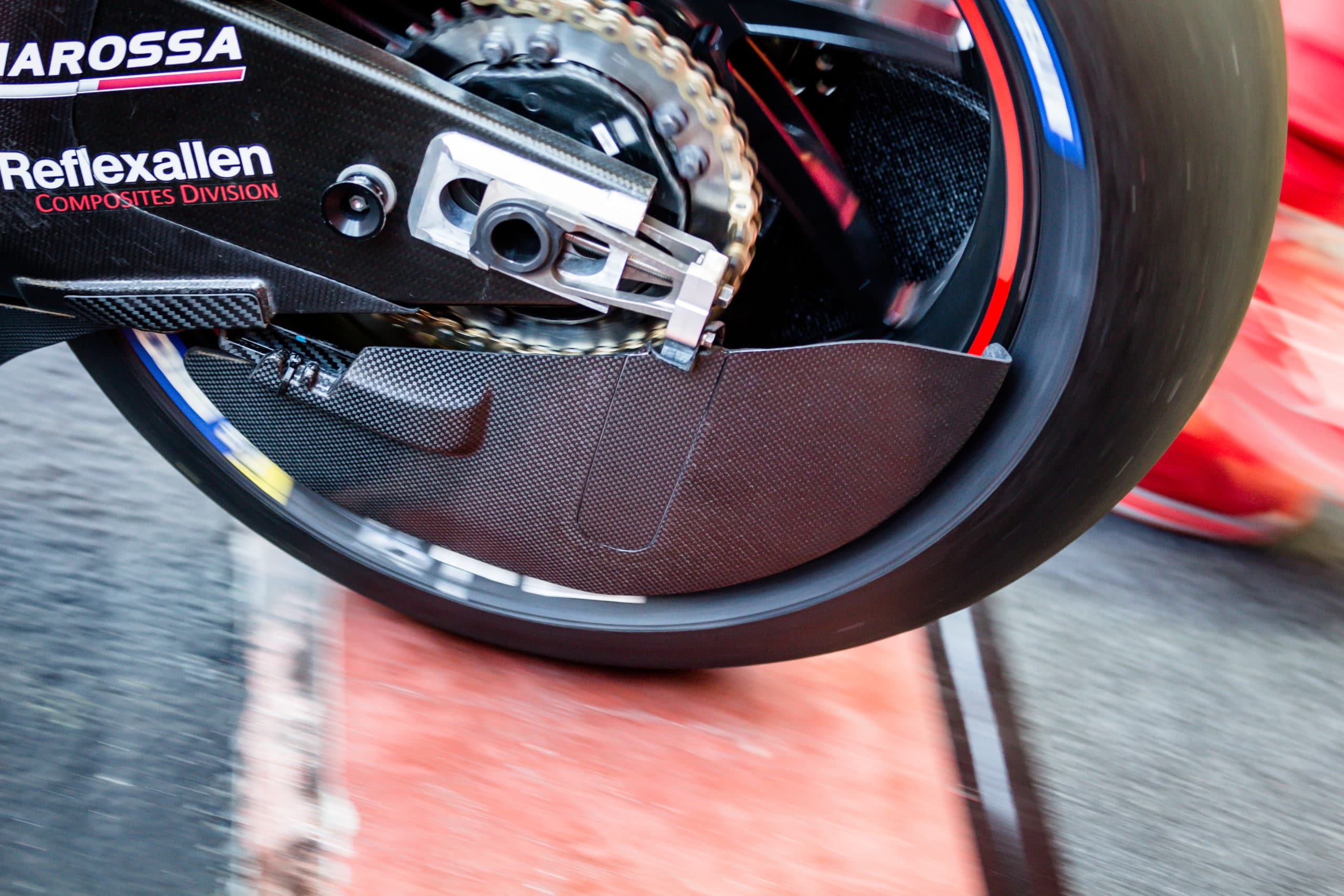
Rear wheel cover on the left side of the Ducati GP19
This photo gives a clearer explanation of how the wheel covers and the spoon work in tandem. Air flow is managed from the front of the motorcycle to the rear. The end goal of all this is to allow the airflow to come off the rear of the motorcycle more smoothly, thereby reducing drag.
Unlike the hubcaps placed at the rear, those used on the front wheels are very securely attached. Again, you don't need to adjust the position of the front wheel in the fork sliders.
